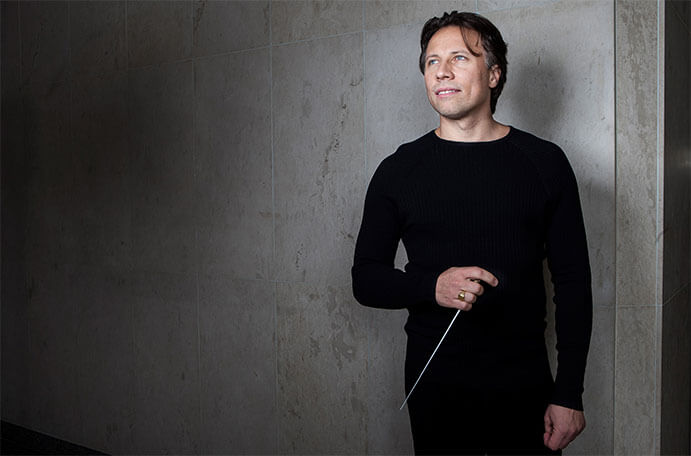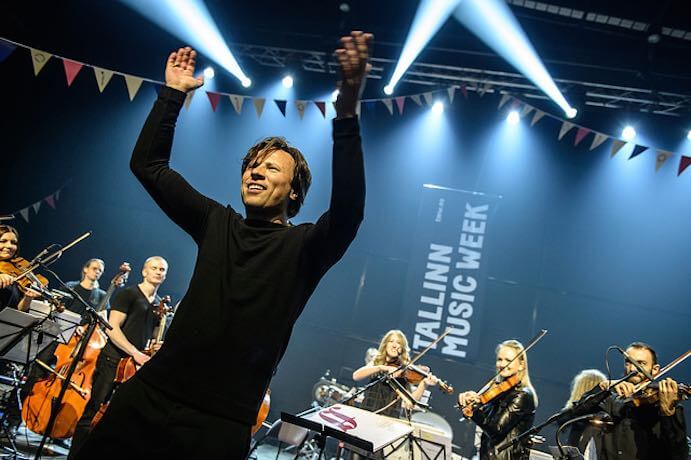If you had told me a few weeks ago that I’d spend the night of March 31 in a recently renovated warehouse in Tallinn, Estonia watching the Estonian president and hundreds of others dancing to contemporary classical music at the instigation of conductor Kristjan Järvi, I probably would have laughed in your face. And yet, there I was, seated in the Kultuurikatel among what felt like the majority of the Estonian population, as well as journalists and critics and musicians from across the globe. The new venue, boasting three separate halls and a fully-stocked bar, was full to the brim with audience members awaiting the opening performance of Tallinn Music Week, an annual conference and music festival taking place in Estonia since 2009. The night would begin with the Glasperlenspiel Sinfonietta playing works by Peeter Vähi and Gabriel Prokofiev, and then transition into a dizzying rotation of acts from Estonia, Latvia, Slovenia, the UK; from “trip-hop” to minimalist to post-punk to electronic.
During the opening remarks from the Estonian Minister of Culture, Kristjan Järvi, and Helen Sildna (the founder of Tallinn Music Week and Estonia’s Person of the Year for 2016), it became clear that the contemporary music scene is viewed—and valued—in a manner that felt totally foreign for an American. The Minister of Culture stressed the fact that this was much more than a festival: “it’s about social responsibility.” Rather than relying on private donors, a large portion of the arts scene is government-funded. And rather than promoting native Estonian acts, Sildna and the other organizers brought in musical acts from 35 different countries, including Iran, Lebanon, and, yes, America. “We put everything we had into this in the hopes of creating a better and more open society,” she said.

This openness was apparent throughout the Glasperlenspiel Sinfonietta’s performance, which began with Estonian composer Peeter Vähi’s Reminiscences of Youth, a concerto for violin and cello duo and orchestra. The repeated dotted patterns in the drums, accompanied on the downbeat by tremolos and runs in the strings, nevertheless established a strong sense of rhythm and mode. Vähi’s musical language swelled and disintegrated as distinctions between the voices became blurred and disappeared, the musicians draping melodies and rhythms into harmonies. Occasionally the soloists, Norwegian duo Mari and Håkon Samuelsen, would break free, first with disarmingly beautiful and simple counterpoint, and later with an unexpected flurry of notes, moving divergently and in parallel, before the final runs from the orchestra. Järvi’s interaction with the orchestra was skillful and controlled while also conversational; he led the young musicians in a crisp yet vivacious performance.
Gabriel Prokofiev‘s Concerto for Turntables and Orchestra followed immediately, with the solo part performed by DJ Switch (“he’s technically only a ‘Mister’, but he’s Dr. Switch to me,” Järvi had joked earlier in the evening). Järvi was here more theatrical in his conducting, while never distracting from the music. The conversation opened with low repetitive scratches on the turntable echoed by repeating glisses in the string basses, which were nearly indistinguishable. The interaction between orchestra, especially the prominent percussion instruments, and the percussive sounds of the turntables quickly devolved into mimicry and bickering. Switch’s manipulations of recorded sound became more complex, allowing for a conflation of the “real” (live, seen) orchestra with the somehow surreal pastness of the unseen (technological, unhuman) sound. During this concerto and the semi-improvised encore that followed, Järvi frequently incited the audience to applause, stomping, and dancing. He pulled faces and threw up his hands at Switch, wandered through the orchestra miming what he wanted individual musicians to do during the improvised bits, and eventually leaped off the stage into the audience, grabbing the hands of audience members (including President Ilves) and pulling them to their feet. The raucousness never abated, only increasing in joyous fervor until Järvi lowered his baton (this time for good), shouting out, “that’s it!”

Poking fun at classical music tropes by livening up the concert experience is one of the many ways Järvi is endeavoring to reshape the contemporary classical landscape. Working from a nonhierarchical viewpoint, Järvi says that “all music is an evolution”, and believes that only through upheaval can we update the stale system we have in place. Despite the somewhat tame beginnings, listeners at the opening night of Tallinn Music Week did not seem disturbed by the music’s evolution towards loud, poppy chaos. It is a testament not only to the openmindedness of the TMW organizers, but to Järvi’s persistent trailblazing, that not a single person left the Kultuurikatel without a smile on their face.
























